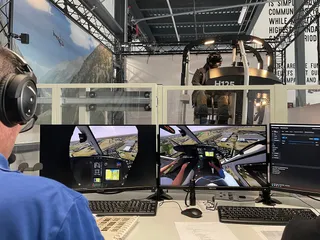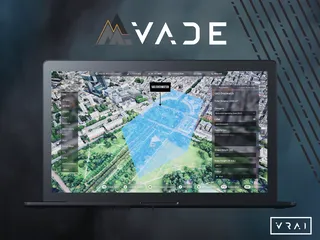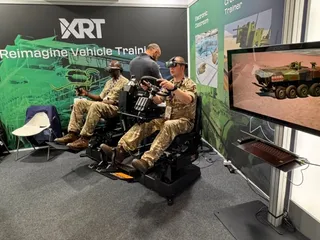VR Takes Flight in Air Ambulance Training
Contact Our Team
For more information about how Halldale can add value to your marketing and promotional campaigns or to discuss event exhibitor and sponsorship opportunities, contact our team to find out more
The Americas -
holly.foster@halldale.com
Rest of World -
jeremy@halldale.com

PHI Air Medical, one of the largest air ambulance operators in the United States, has become the first air medical organization in the Americas to use full-motion virtual reality (VR) flight simulation for pilot training, according to the company. PHI installed Loft Dynamics’ FAA- and EASA-qualified Airbus H125 VR simulator at its Mesa, Arizona training base, launching a new training program centered on immersive and scenario-based learning.
PHI operates more than 100 helicopters and transports over 22,500 patients annually across 82 bases nationwide. The addition of the VR simulator enables pilots to practice a range of complex missions—such as high-altitude rescues, nighttime operations with NVGs, and zero-visibility landings—in a controlled and repeatable setting.
“We fly into the unknown every day—remote crash sites, busy city centers, adverse weather, unfamiliar terrain—and we do it in service of patients who don’t have time to wait,” said Duke Baker, director of aviation operations at PHI Air Medical. “With this technology, we can safely give our pilots any mission at any time, right at our home base, and rehearse until the maneuvers become instinctive—engrained in muscle memory and reflex. And it’s not just a win for us—it’s a signal to the entire industry of what’s now possible. This technology is powerful.”
PHI instructors are developing a curriculum using Loft Dynamics’ full-motion platform, which includes a 360-degree 3D cockpit, force feedback, and six-degrees-of-freedom motion.
“This is exactly where VR was meant to go,” said Fabi Riesen, founder and CEO of Loft Dynamics. “Into the hands of people flying complex, time-critical missions. PHI’s adoption of this technology shows what’s possible when training is no longer limited by geography, cost or availability. Together we’re proving that the most realistic, high-stakes scenarios can be trained for—anytime, from anywhere. This isn’t just a milestone for PHI or air medical operators—it’s a turning point for how the entire industry prepares its pilots.”
PHI is collaborating with the FAA to integrate the simulator into its approved Part 135 training program. Boston MedFlight has also signed a letter of intent to install a Loft Dynamics H145 simulator, indicating wider adoption across the sector.


